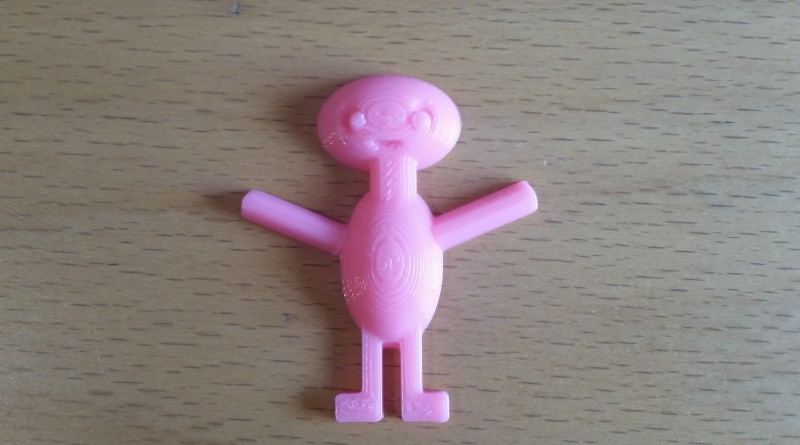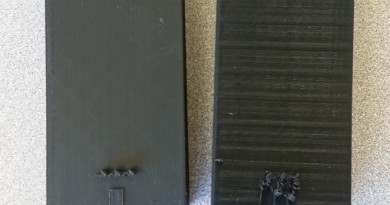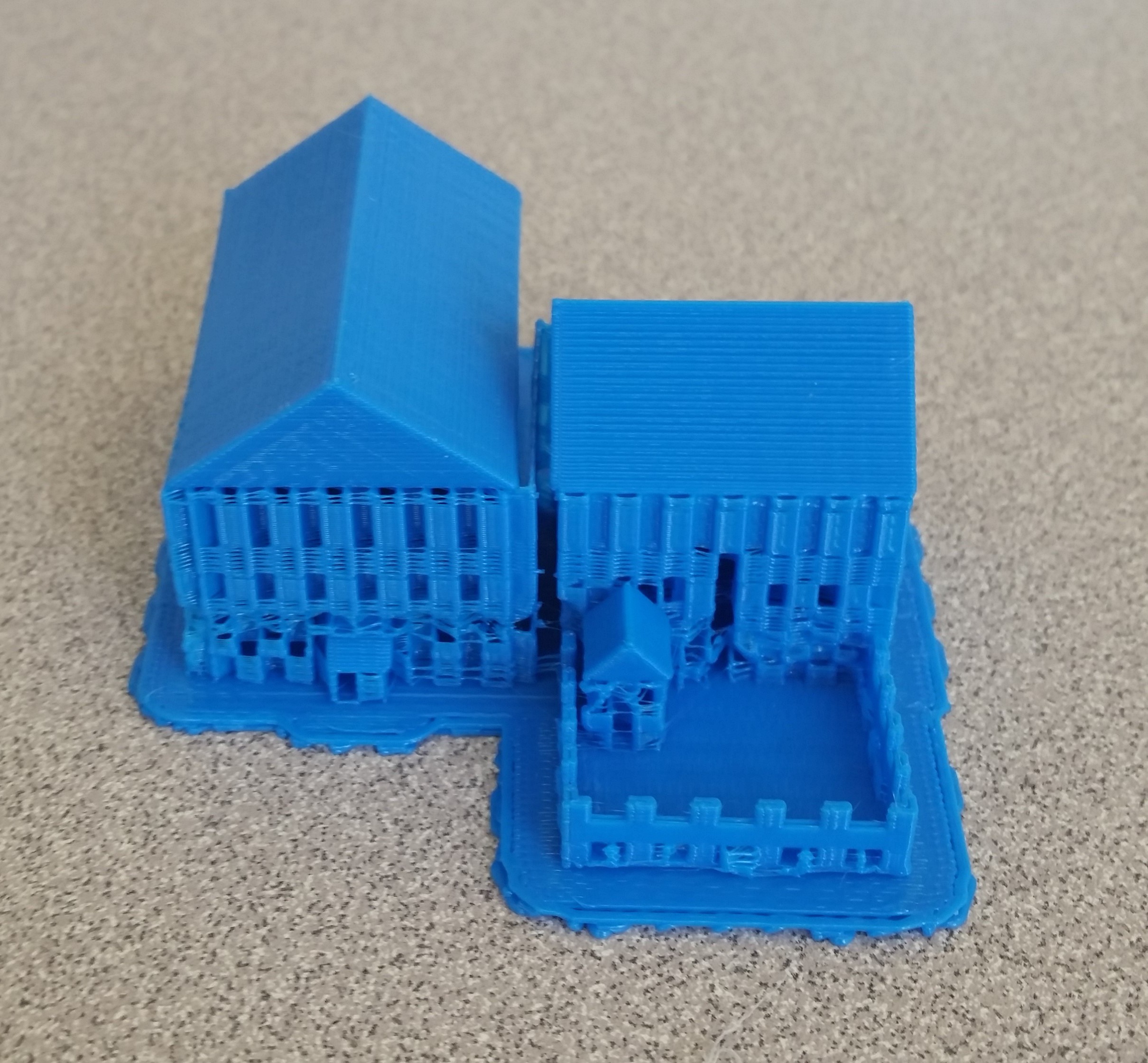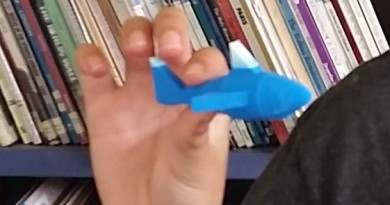3D Print – Heinz
Creation: Heinz
Designed using: Tinkercad
Time to print: 14 minutes
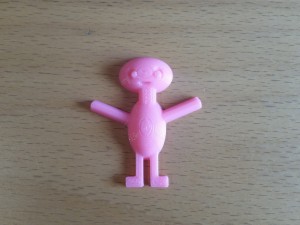
This is Heinz. This was my first time actually creating something for 3D printing so it was a fun challenge to create him. Tinkercad is a great design resource but it does take a little while to figure out how the manipulation works for each shape. I was having trouble when I’d get the cylinder for his neck in the perfect location and then would pan down and discover that his neck was floating an inch above the rest of his body. I can definitely see students struggling with getting things where they want them to be and as the operator of the 3D printer now know to check for floating pieces.
When putting Heinz together, I did want to do as much as possible with the default shapes in Tinkercad to see what would be possible just through dragging and dropping. His body and head are made of semi-spheres and his eye sockets are inverted semi-spheres that I changed into holes. His legs are actually just the letter L that I adjusted to the correct proportions for legs. This leads to the big question of how can you use the letters of the alphabet as part of another design?
Alternate link to Tinkercad Project
The printing for this project was made possible by the Ventura County Library System. The E.P. Foster Library LAB has 3D ptiners and other tools available for the public to use. Check out their website for more information: www.vencolibrary.org/locations/epfoster (Twitter: @vencolibrary) or follow the VCLmaker’s Blog for updated with the available tools and hours: www.vencolibrary.org/blog/92
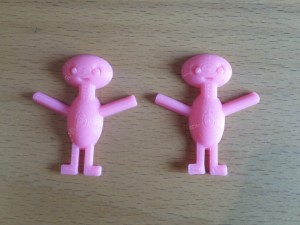
Heinz was actually printed during a demonstration presentation at a Makerspace presentation at the Ventura County Office of Education. For this event, Ron Solorzano and his team brought their 3D printer to VCOE to demonstrate the process to the attendees. The first time they printed Heinz, his right foot came off the base plate and curled a bit, which they predicted may have been due to the different atmospheric conditions in the VCOE building as compared with the library. As a result, they printed Heinz a second time and Heinz stayed properly connected to the base until the end.
I also learned that the way shapes are grouped in Tinkercad makes a difference with how the printer interprets the design. Heinz’s eye sockets were semi-sphere holes into the head shape, while his eyeballs were spheres inside of the sockets. As I originally designed it, the spheres inside the holes disappeared because Tinkercad interpreted the shapes as being inside each other, leaving only a small sliver of a lens floating above his head. To solve this problem, The head and eye socket holes had to be grouped into one object, allowing the spheres to properly sit on top of the contoured head. It’s good to know that order of operations and layering is important in yet another context.
